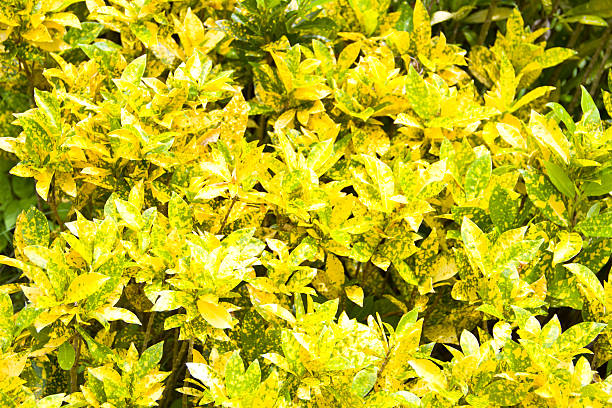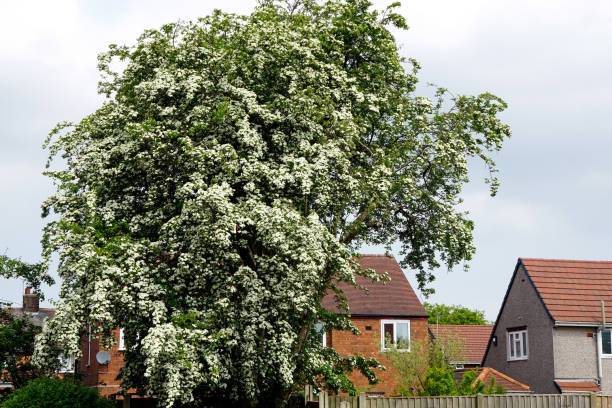Mahonia shrubs are known for their beautiful architectural shape, vibrant yellow flowers, and lush foliage. These plants, which are native to Asia and North America and have a year-round appeal, are used by gardeners and landscaping professionals alike. This comprehensive guide will cover the different types of Mahonia, their care, and how you can incorporate them into your design.
Mahonia plants come in many varieties.
Mahonia shrubs are part of the Berberidaceae plant family, which includes over 70 different species. We love these popular Mahonia varieties:
- Oregon Grape (Mahonia Aquifolium) is a native species of the Western United States. It is distinguished by its holly-like leaves and yellow clusters in Spring. The plant produces blue-black berries, which are used in jams and jellies.
- Mahonia bealei (also known as Beale’s Barberry): This species, native to China, has large leathery leaves that turn bronze in autumn. It has fragrant yellow flowers that bloom in the late winter or early Spring.
- Japanese Mahonia Mahonia japonica: This species, native to Japan, produces yellow fragrant flowers in the late winter or early Spring. It has smaller leaves than other Mahonia types and a compact growth pattern, making it a great choice for small gardens.
- Charity Mahonia ( Mahonia media’ Charity ): This hybrid is a cross of M. japonica with M. lomariifolia. It is known for its large architectural shape and its clusters of yellow, fragrant flowers in winter.
Growing Mahonia Plants
Mahonia plants can be easily grown and maintained, which makes them a favorite among gardeners. Here are a few tips on how to grow Mahonia plants.
Site Selection
Mahonia prefers well-drained soil, partial or full shade. The leaves can be scorched by too much sun. They tolerate some sunlight, but not excessively. Select a location that is protected against strong winds. They can cause damage to the plant.
Planting:
Mahonias are best planted in the early Spring or fall when temperatures and soil moisture are cooler. Dig a hole twice as large as the root ball, and add some organic matter or compost to increase soil fertility.
Watering:
Mahonia plants like constant moisture, but they can tolerate periods without it once established. Water deeply every week during the growing period and reduce the amount of watering in fall and winter.
Fertilizing:
Mahonia plants don’t require much fertilizer. However, you can use a slow-release fertilizer to encourage growth in the Spring.
Mahonia plants should be pruned in late winter or early Spring before new growth is visible. Remove all dead, damaged, or diseased branches, and shape the plant to your liking.
Mahonia Plants: Care and Maintenance
Mahonia plants require little care and are low-maintenance. Mahonia plants require little care.
- Mulching: Spread a layer around the base to retain moisture and control weeds.
- Mahonia plants can be resistant to pests or diseases. However, they are susceptible to root decay in soils that have poor drainage. To prevent root rot, avoid overwatering the plants and make sure they have good drainage.
- Mahonia can be propagated using stem cuttings, divisions, or seeds. For best results, propagate in Spring or fall.
- Winter Care: Mahonias are tough and can tolerate low temperatures. However, they may need winter protection if you live in a colder region. Apply a layer around the base of your plant to protect the roots. You can also cover it with burlap to avoid windburn.
Mahonia Plants in Your Garden Design: Creative Ideas
Mahonia plants can be used to create a wide variety of garden designs. Here are some ways you can incorporate Mahonia into your garden.
- Mahonia plants can be used as borders and hedges because of their dense growth habits. Their evergreen leaves provide year-round interest, and they create a natural barrier that defines spaces.
- Mahonia Plants: Mahonia can be planted around the foundation of your house to add color and texture. They can soften the edges of the building and create a transition between your home and garden.
- Mahonia can be mixed with shrubs, perennials, and annuals to create a border. Their bright yellow flowers make a stunning contrast with other colors, and their evergreen leaves provide a background for other plants.
- Mahonia can be grown in small containers on balconies, patios, or other small areas. Container gardens can benefit from their vertical nature. They can also be combined with other plants for an interesting display.
In conclusion
Mahonias make a great choice for gardeners or landscapers who are looking for an attractive, low-maintenance plant that will provide interest throughout the year. They can be used to create a variety of garden designs with their architectural form and vibrant yellow flowers. Follow the tips provided in this guide to grow Mahonia plants successfully. You can make a beautiful, long-lasting garden by following these tips.



